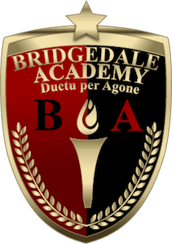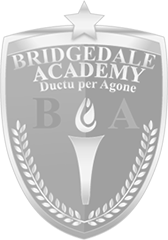Developing Hockey Sense in Competitions
By Mike McPartlin, Headmaster, Bridgedale Academy
This is the third of a 3-part discussion on developing hockey sense. In the first two articles I discussed the 1972 Summit Series pitting Canada against the USSR and the impact that series, and Soviet coach Anatoli Tarasov, had on the evolution of hockey from a hockey sense perspective.
This article follows that evolution through some other hockey milestones that kept setting the bar higher when it came to hockey sense, and ends with some thoughts about what coaches can do to help develop youngsters’ hockey sense in competitions.
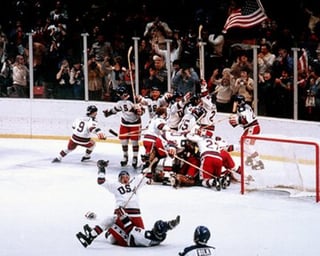 The Miracle on Ice
The Miracle on Ice
On February 24, 1980, less than eight years after the 72 Summit Series, a US team made up primarily of college hockey players won the Gold Medal in the 1980 Winter Olympics in Lake Placid, NY.
They were not even supposed to make it to the medal round.
Two days earlier, that young team had done the unthinkable, beating the world champion USSR with a brilliant athletic performance in a game that will stand forever as one of the greatest upsets in the history of sport.
Today it is known simply as the “Miracle on Ice.”
A new standard for US hockey
The 1980 “miracle” game inspired a generation of American hockey players. (Thirty-six years later I still get goosebumps thinking about it.)
But it was bigger than that. Notwithstanding that the game also had profound political ramifications for the US at a critical time in the Cold War against the USSR, it was a victory that reverberated across the hockey playing world.
And this was because US Coach Herb Brooks and his young team had proved something else at those 1980 Olympics.
Winning on that stage, under those circumstances, they proved that using speed, finesse, conditioning and teamwork, even a bunch of US college kids could beat the Soviet hockey juggernaut at its own game.
From an American hockey perspective, a new style of hockey, with a new level of hockey sense, had been on display.
And it set a new standard for how hockey would be played in the US thereafter.
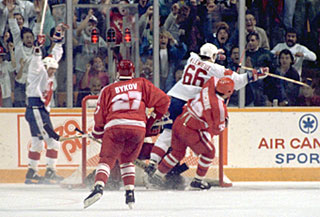 The 1987 Canada Cup - Canada vs USSR
The 1987 Canada Cup - Canada vs USSR
Fifteen years after the Summit Series, Canada once again faced off against the Soviet Union in a hugely important competition.
This time it was the Finals of the 1987 Canada Cup.
And both sides were teeming with superstar players. The Soviets had Fetisov, Krutov, Larionov, Makarov, Kamensky, Kasatonov, Semenov and Bykov. Canada had the likes of Gretzky, Lemieux, Messier, Hawerchuk, Gartner, Bourque, Coffey and Fuhr.
Wayne Gretzky and Mario Lemieux played on the same forward line for Canada in this tournament and were absolutely electrifying. When it was done they’d combined on nearly a third of Team Canada’s goals scored in the tournament.
In what was unquestionably the greatest exhibition of hockey ever played up until that point in time (and arguably ever), Canada won the best-of-three championship.
The Soviets won Game 1 (in OT) before Canada rebounded to take Game 2 (in 2OT).
Game 3 of the Finals was one of the greatest hockey games ever played. After falling behind 3-0, the Canadians came storming back, ultimately scoring the winning goal with just under a minute-and-a-half to go. Lemieux from Gretzky. Naturally.
The score of all three finals games was 6-5, the first two ending in sudden-death.
And the in-game vision and awareness, the hockey sense, on display during the entire tournament, but especially in the Finals, was other-worldly. (If you’ve never seen any of the footage from these games, start with this youtube video.)
(As a side note, two of the US players from the Miracle on Ice game, Mark Johnson and Mike Ramsey, played for the US in the 87 Canada Cup. Yet perhaps even more significant was the fact that six of the US players in that tournament, four of whom were defensemen, would anchor the US team in the 1996 World Cup of Hockey, discussed next. Those six players were: Chris Chelios, Gary Suter, Phil Housley, Kevin Hatcher, Pat LaFontaine and Joel Otto.)
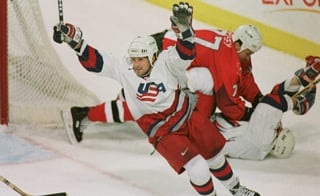 The 1996 World Cup of Hockey - US vs Canada
The 1996 World Cup of Hockey - US vs Canada
Nine years after the 87 Canada Cup, and less than a generation after the Miracle on Ice, the US team would go on to win the inaugural World Cup of Hockey in 1996.
This time it would be the US versus Canada in the best-of-three Finals series.
And as Canada had done in 1987, the eventual champion US would lose Game 1 and have to rally for wins in Games 2 and 3, both played in Montreal, to claim the title.
Not one player from that 1996 US team had also played in the 1980 Olympics.
But every single one of them had been inspired by it. And that inspiration led them first to careers in the NHL … and then to World Cup of Hockey glory.
The physical and the mental get faster
The pace of play in that 1996 World Cup of Hockey was exhilarating to watch. Not only were the players getting faster, but so was the puck movement and the “thinking speed” of the players. Seemingly of ALL the players.
From the Original Six years, to the 1972 Summit Series, to the 1980 Olympics, to the 1987 Canada Cup, to the 1996 World Cup of Hockey, and right up until today, year after year the speed of the game keeps increasing.
The speed of the competition enhances the thinking game
The most significant development in hockey in the forty-four years since the 1972 Summit Series has been the “speed of thought” of the players.
It is of course true that the players on average are bigger, stronger, faster, more skilled and better trained, and that there are more great players today than ever before. And of course the technology of the skates, sticks and other equipment is also light years beyond what it was back in the days of the Original Six.
But for me, the thing that sets the game apart today is the speed and quality of the decision-making. It’s the hockey sense.
Virtually ALL the players in the NHL today have excellent hockey sense.
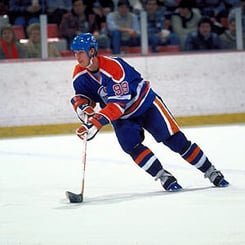 Footnote: A few words about the influence of The Great Gretzky
Footnote: A few words about the influence of The Great Gretzky
Once a generation it seems, a hockey player comes along who “revolutionizes” the game. Players like Doug Harvey, Gordie Howe, Bobby Hull and Bobby Orr all left their own imprint on how the game of hockey would thereafter be played. Each had his own style, and each “changed” the game.
But when it came to hockey sense, none of them changed hockey the way Wayne Gretzky did.
Regarded as too weak, too small, too slow and not “tough” enough to ever be a truly effective NHL player, Gretzky was beyond unique. Even as a 19 year-old in the NHL, he was simply dominant.
Teams would design their game plans to limit his time and space, yet he always seemed to be playing alone in a 10-foot circle of open ice. It was like he had a force field around him that no opponent could penetrate.
His speed of thought was so fast, and his decision-making so creative and so pure, that it simply boggled the mind.
He showed the hockey world what was possible when a player could “think” the game at such a high, high level.
And, naturally, other great players took notice of Gretzky and began to understand how much better they themselves could be … if only they would “think” the game better.
There is no doubt in my mind that Mario Lemieux, for all his incredible physical gifts and his storied career, became a better player because of Wayne Gretzky.
After playing on the same line with Gretzky in the 1987 Canada Cup, Lemieux was a different player and, most would agree, a much better player.
And so from a hockey sense perspective, no player revolutionized the game like Gretzky did.
Hockey sense and the speed of the game
Players need to play in competitions in order to develop their hockey sense. This is especially true for goalies.
This is because it comes down to the speed of the play.
Ultimately, the limiting factor for most hockey players is their inability to think the game fast enough for the speed of the play happening around them.
Put another way, the highest level at which they can continue to compete effectively is just below the level at which their thinking speed can no longer keep up.
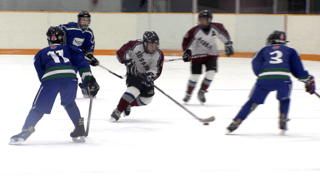 Hockey sense developed in competitions
Hockey sense developed in competitions
It is impossible to create in practice drills the same speed and intensity of a game.
In practice sessions, the closest you can get to game speed are competitive scrimmages and small area games. And even then, they’ll only approach “game speed” if the players are themselves extremely competitive and going full tilt.
And it is indeed the rare youth hockey player whose intensity level in practice sessions can match what he brings in games.
But that said, “competitions” in which hockey sense can be developed include not only actual games, but also scrimmages and small area games during practice sessions.
Developing hockey sense in games
A good youth coach will try to help his players develop their hockey sense in games.
This can be challenging for the team’s head coach because in the heat of battle the coach has to manage the bench in addition to staying aware of the on-ice action. It can be done, but obviously it should never be at the expense of other game duties.
Ideally, an assistant coach is available to talk to players individually immediately after they come off the ice after a shift, i.e. while the play that just happened on the ice is still fresh in the player’s mind.
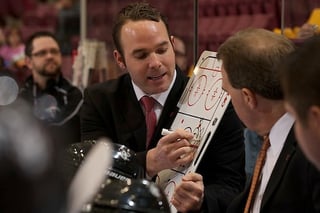 The coach can help the player’s in-game thinking, i.e. his hockey sense, by going over the play immediately.
The coach can help the player’s in-game thinking, i.e. his hockey sense, by going over the play immediately.
My preferred way of doing this is through a 3-step process:
-
Identify
-
Analyze
-
Finalize
In step one, Identify, I will:
-
Clearly identify to the player the play I want to go over with him (“let’s talk”)
-
Make certain the player knows exactly which play I’m talking about
In step two, Analyze, I will:
-
Ask the player to describe the play as he remembers it (“tell me what you saw”)
-
Get details as to the on-ice time and space he was aware of as the play developed
-
Ask him where his teammates and opponents were as the play developed
-
Ask questions to see if the player can fill in any gaps (“did you see their F3?”)
In step three, Finalize, I will:
-
Fill in any remaining gaps, explaining to him what he might have missed
-
Describe the play in detail as it actually happened, making sure the player understands
-
Praise the player for what he did well (maybe his play was perfect)
-
Ask the player what he could have done better on the play (maybe nothing)
-
Go over the proper play (and if his play was perfect I’d want to reinforce that)
-
Have the player repeat the go-over of the proper play (especially if his play was not perfect)
-
Praise the player again (this time for listening, focusing and learning)
In the context of a game, this entire process might only take 30 seconds, or less. And sometimes I’ll skip step one and jump to step two if I know the player well enough and I’m certain he knows what play we’ll be analyzing.
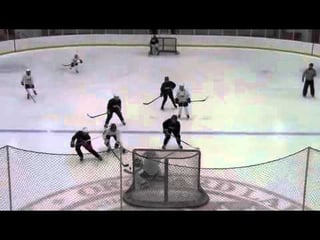 Developing hockey sense in scrimmages and small area games
Developing hockey sense in scrimmages and small area games
The same process of Identify, Analyze and Finalize also applies to teaching hockey sense in scrimmages and small area games in practice sessions.
But in the context of a practice session, the head coach will not be preoccupied with game management duties.
In addition, whereas in the context of a game even an assistant coach is often limited to teaching to only one player (or perhaps to a defensive pairing, or to a forward line) at a time, in the context of a team’s practice, the coach can use the occasion to teach the entire team about some “situation” that should have been (or was) recognized, and why it should have been recognized.
In other words, the coach can stop everything and make the players “walk” through the situation that just occurred, asking questions about how or why the situation should have been recognized, and quizzing players on the options available and what decision should have been made in the situation.
Properly done, the coach can help all the players on his team learn from one player’s mistake, or, for that matter, from a perfectly executed play.
Conclusion
I believe that coaches can indeed help their players develop better hockey sense, and that they can do this both in practices and in games. In drills in practices, there is a certain limit to what can be done for hockey sense, even though hockey’s thinking “concepts” can and should be reinforced in drills.
In competitive practice scrimmages and small area games, however, much more can be done. And in games, a conscientious coaching staff can teach and/or reinforce hockey sense with his players even more effectively, since the situations have just happened at game speed and intensity and are fresh in the players’ minds.
Come see Bridgedale Academy for yourself
Bridgedale Academy invites you to come see for yourself what makes us so special.
Come see for yourself why Bridgedale could be the best thing that ever happened to your son's development:
- as an athlete
- as a hockey player
- as a student
- as a young man
Academic curriculum by Hillsdale Academy.
Athletic training by 200 x 85.
If this topic interests you and you would like to discuss it further, please click the button below so we can schedule a time to chat.
Bridgedale Academy is now accepting transfers for the 2018-19 School Year.



